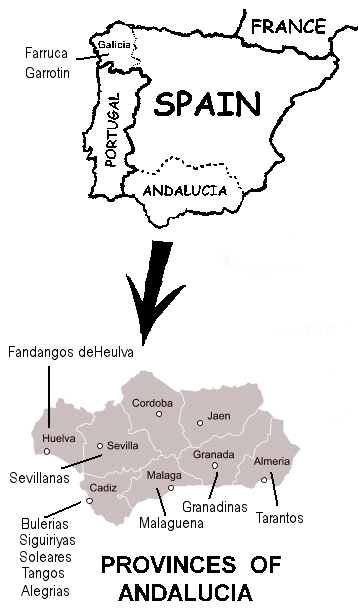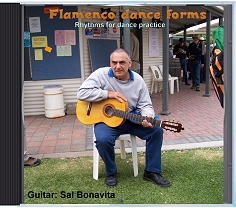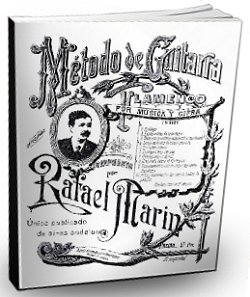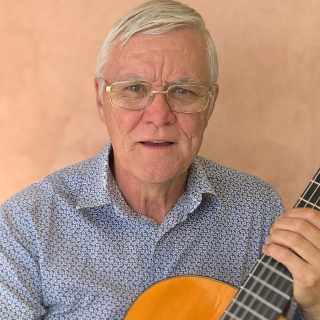Flamenco song regions in Andalucia
Regional variations
Each of the 8 provinces of Andalucia has developed song forms that are specific to it. Even within each province there are variations that are specific to a particular area within the province. For example, Fandangos de Huelva is specific to the province of Huelva.
Fandangos de Málaga is the regional version from Malaga. This version is better known as a Verdiales. The danceable form of Malaguena is also from Malaga and is derived from earlier, folkloric types of fandango. The so called "flamenco style" Malaguena is a "cante libre" (with no regular rhythmic pattern).
Many varieties are derived from the so called fandangos grandes (big fandangos). These are normally danced by couples and start out slowly with gradually increasing tempo. The fandanguillos (little fandangos) are livelier, more festive fandangos.
To a beginner it may seem a little overwhelming to realize there is no such thing as one standard way to play or dance Alegrias or Soleares for example. Song and dance forms are traditional in the sense that they seem to have been around forever and nobody really knows who invented it or who first sung or danced it. Generally speaking, flamenco forms were developed over time by people as a community rather than through the traceable efforts of specific individuals. As time passed they were handed down through generations and naturally migrated to other regions. In the process, new bits were introduced and some parts were changed to suit the style of each region. Having said that, it should be noted that some forms can indeed be credited to specific people. An example of this is the Rondena which is credited to Ramon Montoya.
Each song form has it's own history that is good to know about in order to get into the feel and emotion of the thing are supposed to be playing or dancing. Tarantos is the song form of the miners of Almeria. It is characterized by dark melodies of tragedy, deprivation and sorrow but it also has elements of hope and relief.
Sevillanas is (obviously) from Seville and is a classic example of how a song and dance form can be performed in variety of different styles as demonstrated in Carlos Saura's movie Sevillanas. However, the structure is the same and you will instantly recognize it as Sevillanas regardless of style. Other song and dance forms may be a little harder to recognize. You also have the hybrid forms such as Solea por Buleria, and so on it goes.
Flamenco is not a static art form and is constantly being developed and changed. In order to prevent yourself getting totally confused by the vast variety of regional differences I believe it's a good idea to start with the basic forms that are most recognizable and commonly taught as standard. For example, learn Fandandos de Huelva to get used to what fandangos feels like before moving on less well known or exotic regional variations. Likewise it's good to get used to the "standard" accent patterns before getting too involved with accent variations.






